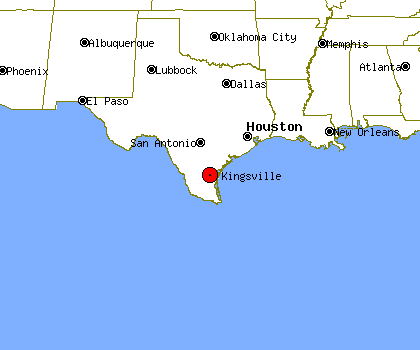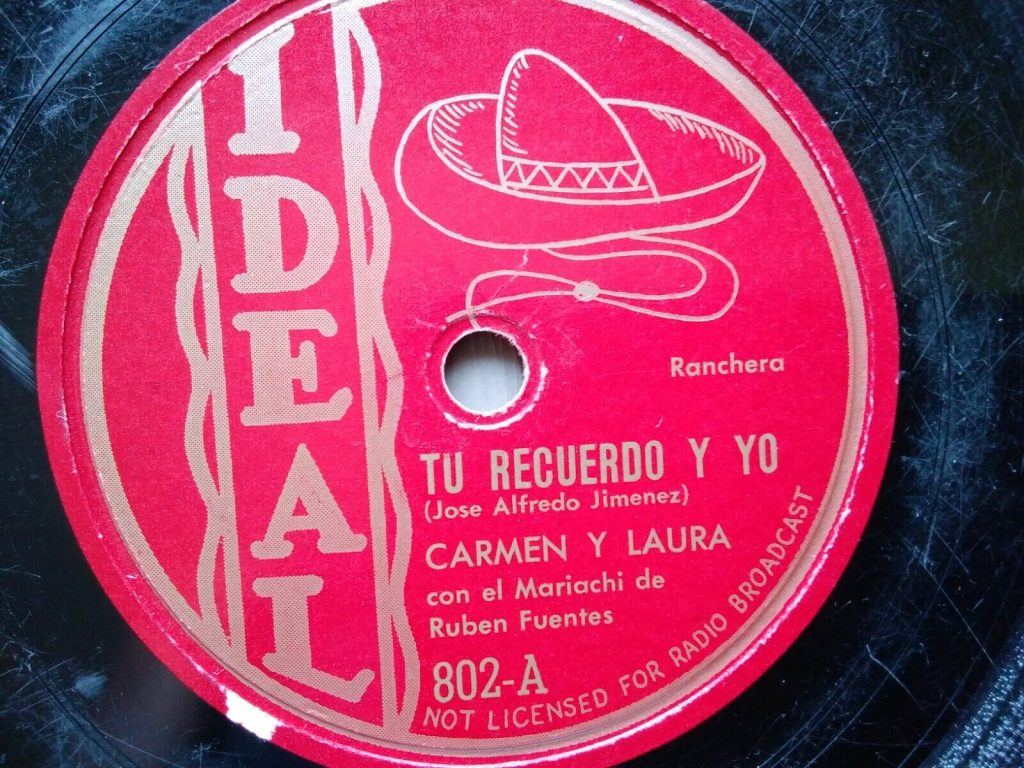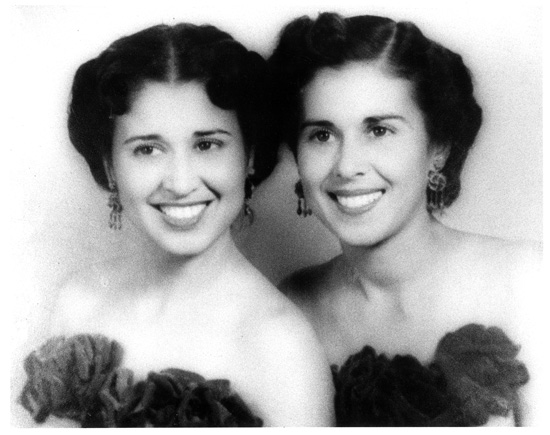About the Artist
Carmen and Laura Hernandez (born 1921 and 1926 in Kingsville, Texas) were a musical act that consisted of two Mexican-American sisters. They were often called the Tejano version of the Andrews Sisters because the two groups had songs that referenced and were popular during wartime (especially about love and relationships). Carmen married Armando Marroquín, who worked in the jukebox business, and later became a record producer. “Se Me Fue Mi Amor” was recorded in Carmen’s kitchen and became their first hit.
Carmen and Laura wrote songs from the perspective of a woman during the war, which was very different from other Tejano music, where the majority were from the perspective of a man. The two were singers and performers in a very patriarchal Mexican-American culture, where they were expected to be mothers and wives. Carmen and Laura helped pave the way for other female Tejano artists to be able to record and perform music how they like.

Kingsville, Texas
Kingsville was established in 1904 once a railroad was built to connect the Rio Grande Valley to the rest of Texas and to serve the King Ranch (the largest Ranch in the United States, founded by Richard King). Jin Crow laws and other segregationalist policies were established in the area by the beginning of the 20th century. This led to three segregated communities being formed: the Spanish-speaking Tejano and migrant Mexican families of farm workers from the north, the African-American community that mostly worked on the railroad in the south, and the Anglo-American community in the center of the city.
Leading up to World War II, Congressman Richard Kleberg called on the War Department to choose Kingsville as a future site for a military airfield. Eventually, in 1942, the U.S. Navy opened the Naval Air Auxilary Station Kingsville, a near training airfield. This was very close to home for Laura and Carmen and could explain the origins of this lament.

Ideal Records
Armando Marroquín was an important figure in Tejano music. Along with the help of Paco Betancourt, the two founded Ideal Records in 1946. This was the first southern Texas record label that was owned by Mexican Americans. It was founded because many record labels halted the production of music during and following WWII, and this, unfortunately, targeted Tejano artists. Marroquín owned jukeboxes in places frequented by those of Hispanic descent and was struggling because he wasn’t able to play the music his customers wanted and, as a result, was losing money. He gathered the equipment he needed and this song, “Se Me Fue Mi Amor,” was the first song he recorded. It quickly sold out and was able to not only satisfy his customers but also found other jukebox owners that wanted to purchase the music. Marroquín later partnered with Paco Betancourt, who was a record distributor and owned a music store, and the company took off.
Ideal Records was a pillar in Tejano culture and music. They helped the careers of other notable Tejano artists such as Narciso Martínez, Tony de la Rosa, Valerio Longoria, El Conjunto Bernal, Beto Villa. Artists featured on the label contributed to shaping the sound of Tejano music we hear today. For example, Narciso Martínez helped make the accordion a common backup instrument in vocal duets (which we can hear in this song).

About the Song
The song “Se Me Fue Mi Amor” was released in late 1945 and is a lament about a woman missing her husband while he is overseas during World War II. The woman worries that her husband may not make it back to her and even goes as far as to wish that if he dies, she is met with the same fate because living without him would be too difficult.
Lyrics
Se me fue mi amor
y no sé ni adónde.
Se me fue a la guerra
sin decirme: “Vuelvo.”
Se me fue mi amor,
se me fue mi encanto,
y no sé hasta cuándo
volveré yo a verlo.
Quisiera su sombra ser,
su suerte correrla yo,
seguir u camino y el mismo destino
que tenga que tenerlo yo.
Quisiera por él volar,
hacia adonde está mi bien,
volar por las aves, cruzar esos mares,
llegar a morir con él.
Se me fue mi amor,
pero noes por siempre,
porque sé que vuelve
otra vez a mí.
Yo le pido a Dios,
si no vuelvo a verlo,
que me dé la muerte,
que es mejor morir.
My love has gone,
and I don’t even know where.
He left to go to war
without telling me “I’ll return.”
My love has gone
and with him my illusion,
and I don’t know when
I’ll ever see him again.
I wish I were his shadow,
and have his fortune be mine,
to follow his path
and to share the same destiny.
I wish I could fly for him,
to where ever he may be,
fly like the birds across the sea,
to die along with him.
My love has gone,
but not for ever,
for I know that one day
he shall return to me.
If I don’t see him again,
I ask God
to grant me death,
for death would be a better fate.
This song features a very notable accordion and a solemn vocal, which I would associate with blues music. The accordion is a very common instrument in Tejano music, but it wasn’t common with female singers, who were often accompanied by a variety of ensembles and instruments. This was until Carmen and Laura broke this tradition and featured the instrument, which quickly became popular and became a notable feature of Tejano music.
Citations
Hartman, Gary. “Ideal Records.” Texas State Historical Association, 16 Nov. 2006, www.tshaonline.org/handbook/entries/ideal-records.
“Kingsville a Brief History of Kingsville, Texas.” Town Square Publications, 17 Feb. 2019, townsquarepublications.com/history-of-kingsville-texas/.
Peña, Manuel H. “The Mexican American Orquesta : Music, Culture, and the Dialectic of Conflict.” Internet Archive, Austin : University of Texas Press, 1 Jan. 1999, archive.org/details/mexicanamericano0000peam/page/74/mode/2up.
San Miguel, Guadalupe. “The Rise of Recorded Tejano Music in the Post-World War II Years, 1946-1964.” Journal of American Ethnic History, vol. 19, no. 1, 1999, pp. 26–49. JSTOR, http://www.jstor.org/stable/27502505. Accessed 20 Feb. 2023.
Tejano Roots: The Women (1946-1970). folkways-media.si.edu/docs/folkways/artwork/ARH00343.pdf.
